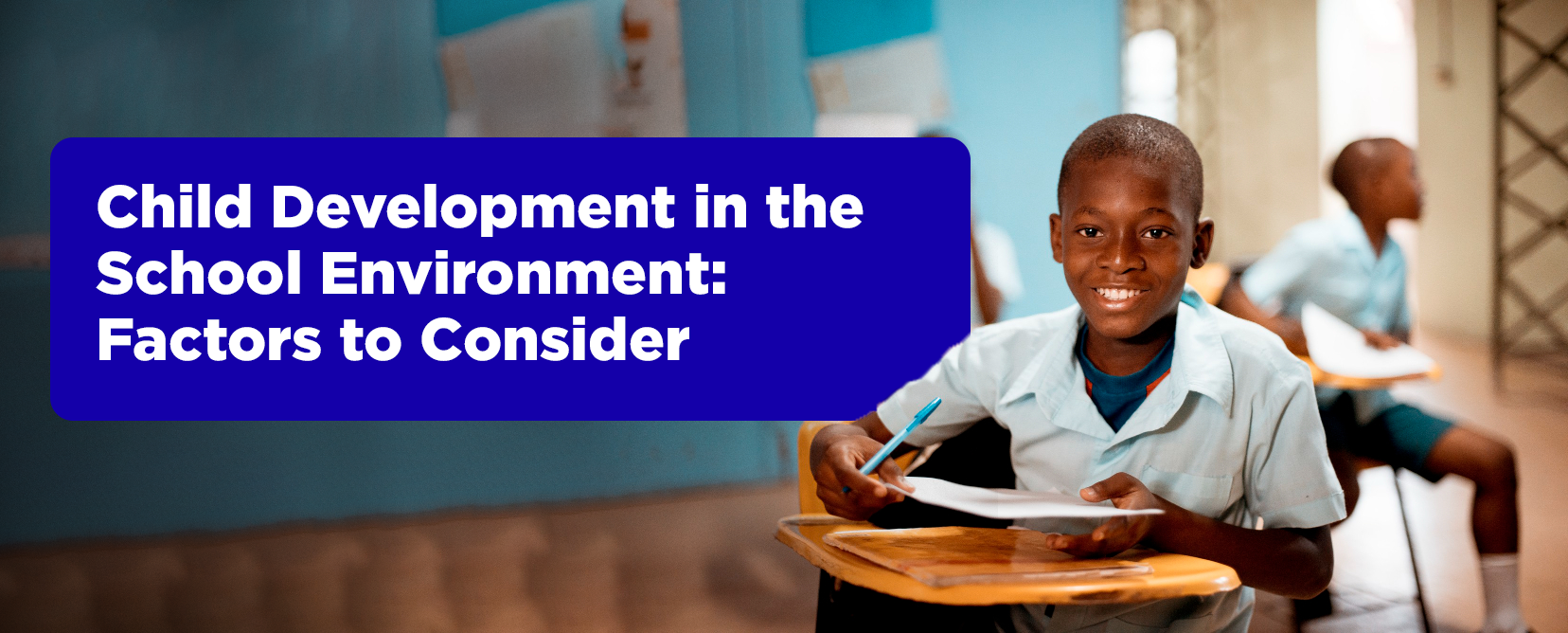16 Sep Child Development in the School Environment: Factors to Consider

Child development is a very important concept that schools must put into consideration. The environment a child grows up in influences their learning.
Studies show that by age 15, children would have spent an average of 7,538 hours in the school environment. As such, after the home, children spend the majority of their time around the school environment.
Therefore, the school environment must meet the requirements for proper child development.
What is Child Development?
Child development simply put, refers to the changes that a child undergoes from birth to early adulthood.
These changes are broadly divided into:
Cognitive development
This involves the changes in thinking and reasoning processes. Cognitive development captures the child’s ability to solve problems, use, and understand language.
Social development
This captures how the child relates, plays and talks with others.
Physical development
This involves the development of the child’s body, muscles and senses.
Emotional development
This entails how the child feels about herself, how she expresses feelings, and how she cares for herself. For children to grow emotionally strong, they need to be taught to control and understand their emotions.
Factors to consider
The physical, social, and emotional components of the school environment are very instrumental to early child development.
The Physical Environment
The physical school environment refers to the infrastructure and amenities provided in the school. For proper child development, the amenities listed below should be provided and maintained in optimal conditions:
- Serene location of the school buiding, away from industrial and traffic noise
- Airy classrooms with natural lighting, cross ventilation, and good temperature control
- Well-fitted laboratories
- Playing courts and sports facilities
- Adequate day care facilities
- Large and hygienic dining areas
- Hygienic toilets
- Well-operated school buses (or other transport systems)
Other facilities can be provided according to the unique needs of the school, but they must be maintained at an optimal condition.
The Social Environment
According to Stephen Elliot, “If we increase social skills, we see commensurate increases in academic learning. That doesn’t mean that social skills make you smarter; it means that these skills make you more amenable to learning”.
The school must foster proper student-to-teacher and student-to-student social relationships.
The school environment must provide an atmosphere for free social interactions in order to help children develop adequate social and cognitive skills.
This can be achieved by organizing social activities which teach the skills of sharing, cooperating, and listening. Societal values such as respect, courtesy, honesty, etc, must be imbibed in the child.
At Chalcedony School, we have a myriad of social activities for children of all age groups.
The Emotional Environment
The child must feel affection and warmth in order to blossom properly. A stable and loving relationship will nurture a child’s personality. They will feel important and valued.
The school must provide an environment of care. The child should be able to freely confide in her teacher.
Conclusion: Take charge of your child’s development
In conclusion, no aspect of a child’s development should be ignored. That is why we at Chalcedony School endorse a holistic approach to child development.
Adequate child development is the responsibility of the parents as much as it is that of the school. Therefore, we encourage you to bring your child to us, and we will partner with you to ensure the proper development of your child.

Temitope Ojikutu
Posted at 06:18h, 17 SeptemberThank you for all you do Chalcedony School!